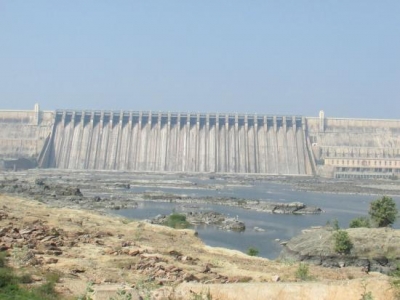
Nagarjuna Sagar Dam is a masonry dam across the Krishna River at Nagarjuna Sagar which straddles the border between Guntur district, Andhra Pradesh and Nalgonda district, Telangana.
Nagarjuna Sagar Dam was the earliest in a series of large infrastructure projects termed as “modern temples” initiated for achieving the Green Revolution in India. It is also one of the earliest multi-purpose irrigation and hydroelectric projects in India. The dam provides irrigation water to the Nalgonda, Suryapet, Krishna, Khammam, West Godavari, Guntur, and Prakasam districts along with electricity generation. Nagarjuna Sagar Dam is designed and constructed to use all the water impounded in its reservoir of 312 TMC gross storage capacity which is the second biggest water reservoir in India.
The construction of the dam submerged an ancient Buddhist settlement, Nagarjunakonda, which was the capital of the Ikshvaku dynasty in the 1st and 2nd centuries and the successors of the Satavahanas in the Eastern Deccan. Excavations there yielded 30 Buddhist monasteries as well as artwork and inscriptions of historical importance. Prior to the reservoir’s flooding, monuments were dug up and relocated. Some were moved to Nagarjunakonda, now an island in the middle of the reservoir. Others were moved to the nearby mainland village of Anupu.
The reservoir water was released into the left and right bank canals by Prime Minister Indira Gandhi on August 4, 1967. Construction of the hydroelectric power plant followed, with power generation increasing between 1978 and 1985 as additional units came into service. In 2015, diamond jubilee celebrations of project’s inauguration were held, alluding to the prosperity the dam has ushered into the region.
Picture Credit : Google

